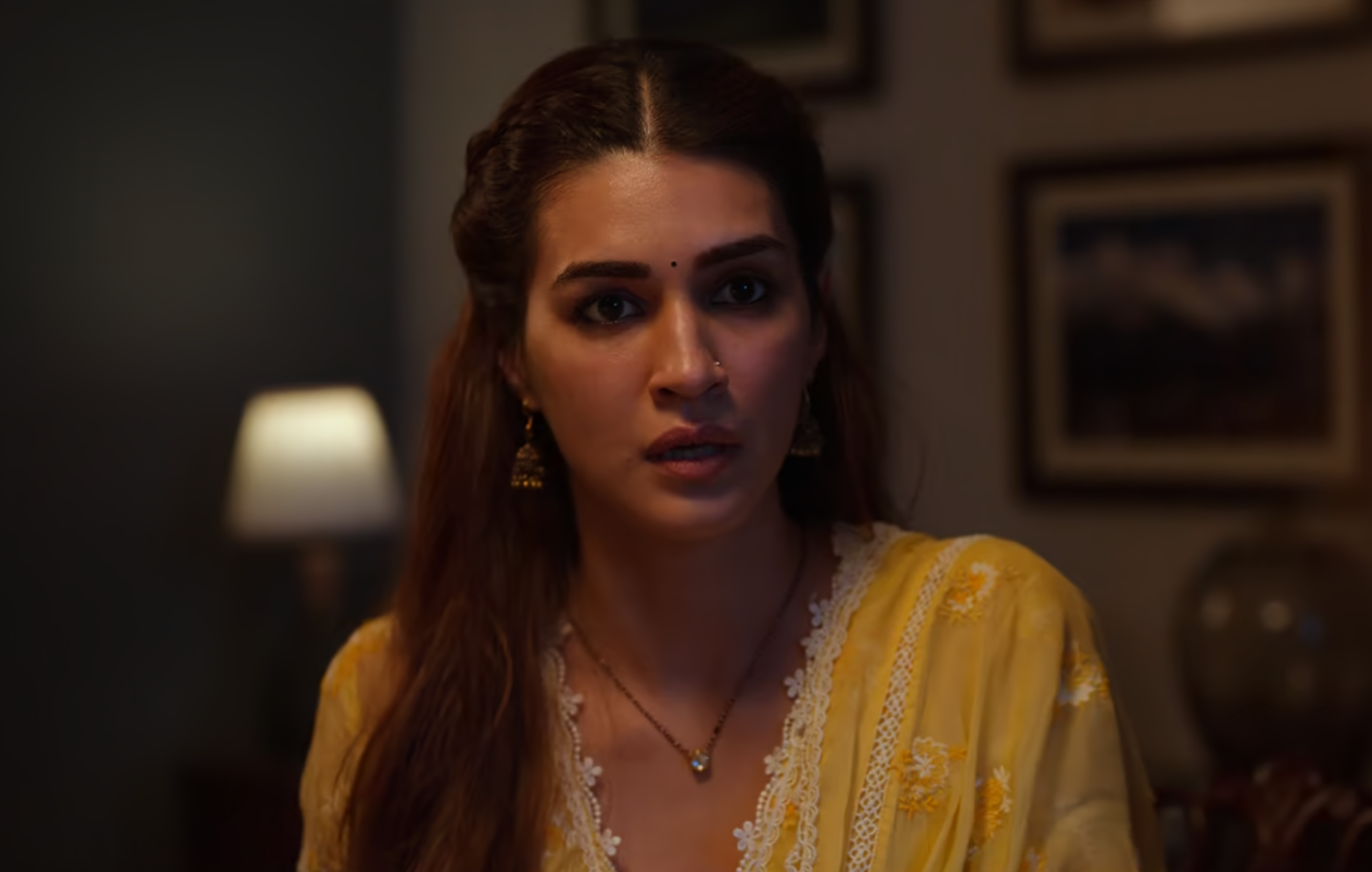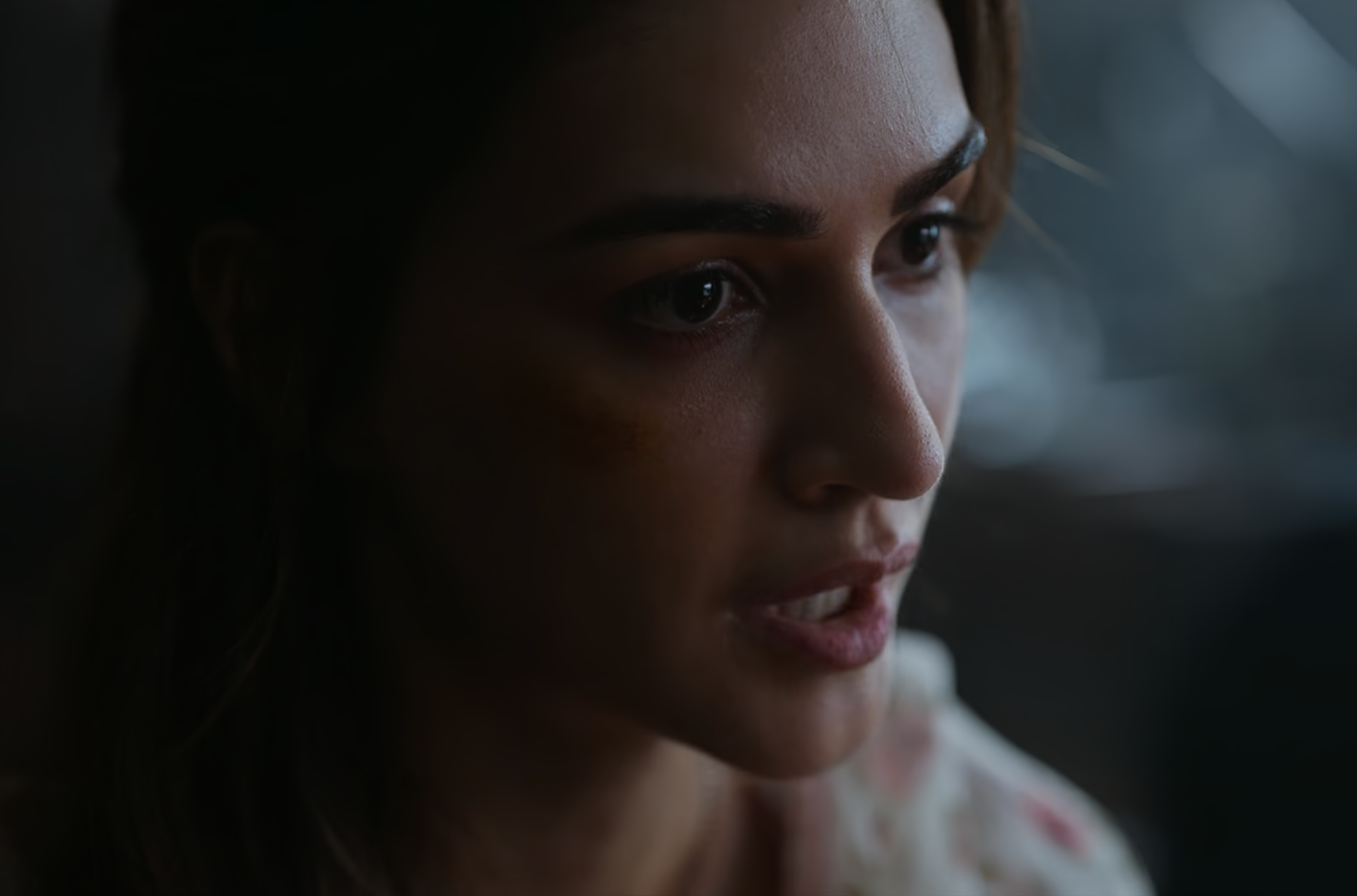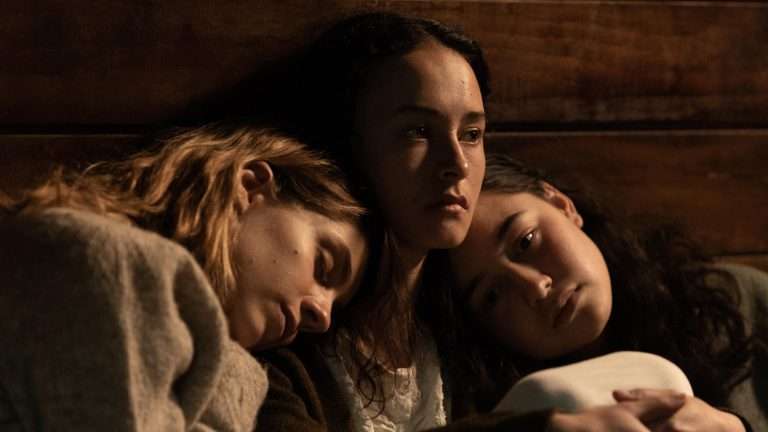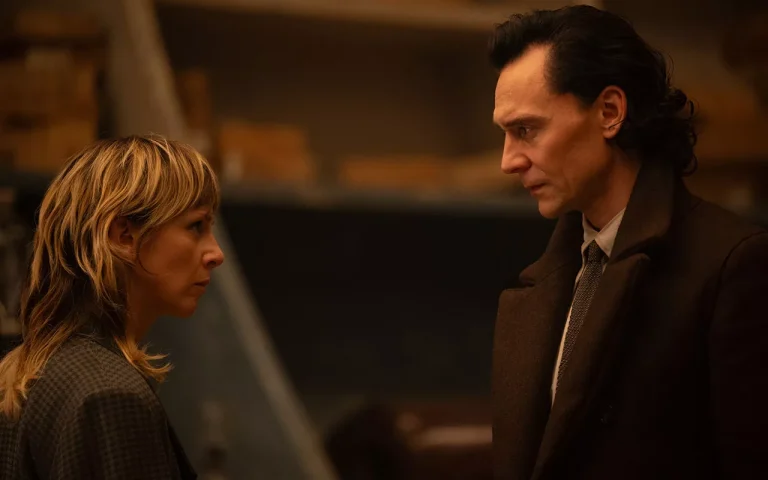Kanika Dhillon’s oeuvre seems to suggest a resurgence of the pulpy nature of storytelling as well as a hearkening back to noirish or neo-noirish sensibilities. But even within those pulpy storytelling tropes, Dhillon also tries to retrofit important social issues, especially concerning women. If there is one thing Dhillon should be praised for, it’s writing scripts for female characters with apparently strong characterization as well as providing variety beyond the usual constraints of commercial cinema.
I say apparently, and my tonality in the above paragraph carries a tone of uncertainty because this film is reliant on a screenplay that feels like it is unsure of what it wants to be. Ostensibly about the battle of wits between two twin sisters (both played by Kriti Sanon) and how the more outgoing and jealous twin wants the life of her sister to be completely destroyed as they both are attracted to the same man—Dhruv Sood (Shaheer Shaikh), “Do Patti” is anything but.
The Shashanka Chaturvedi directorial, scripted by Kanika Dhillon, soon dovetails into a story about domestic violence and how one helpful cop, Vidya Jyothi, AKA VJ (Kajol), is interested in the case and wants to help Saumya but is unable to because she is reticent about reporting the domestic violence. Until one fateful incident regarding a paragliding trip that Saumya attests was Dhruv’s plan to ultimately kill her.

I do think recounting the story and commenting on all the intricate faults of the screenplay would be a useless errand. The truth is much simpler—the film has been unable to engage me as a viewer since the beginning, which is why the cracks within the glossy film stand out even more. The opening sequence of the paragliding is plagued with the bad CGI that has become a staple of a Kanika Dhillon joint. Her previous outing, “Phir Aayi Haaseen Dilruba,” also had an issue with CG alligators and a very badly rendered fall in the final act, almost derailing the narrative. Supplanting this in the opening sequence, shows a creative team with ambition just exceeding their grasp.
The issues compound from there. The introduction of Kajol as a helpful, determined, bubbly, and sarcastic police officer with a strong Haryanvi accent brings forth its own brand of comedy that becomes completely antithetical to the rest of the movie, which would soon dovetail into the saga of twin sisters Saumya and Shailee (Kriti Sanon). Sanon has the most screen time in the movie, for obvious reasons, and she is very good and holds her own in her role as Saumya, the meek sister content to hold her marriage together, despite issues plaguing her. In the role of Shailee, however, Sanon reverts to the traditional glamorous roles that have characterized a majority of her career, but her outgoing nature only highlights a form of edginess.
And Dhillon isn’t really interested in exploring these sisters, especially Shailee, beyond what the premise dictates. Thus, when Dhruv and the plot regarding his violent attitude exhibited towards Saumya come to the foreground, Shailee’s seduction and general hatred towards her sister recede towards the background. While the exploration of domestic violence in Indian households that remains unreported is an important message requiring to be addressed, how Dhillon and director Shashanka Chaturvedi highlight this by actually showing a sequence of Dhruv beating up Saumya savagely while a Punjabi ballad plays in the background could be characterized only as tone-deaf and frankly baffling.
It also doesn’t help that Shaheer Shaikh’s performance is barely a memorable one, even as the screenplay saddles him with characterizations—spoiled brat, a streak of cruelty, charming, and charismatic—that Shaikh is simply unable to portray convincingly. Kajol, plagued by an inconsistent accent aside, is serviceable at best. Her character doesn’t have anything to do beyond being caught up in the events in the first half, while in the second half, her character takes on the role of the lawyer to defend Saumya’s case. This is where her role becomes meatier, even though the courtroom sequence still resembles less of a courtroom and more of a theatrical stage and a pulpit for characters to threaten, overact, and, at their worst, simply expound on revelations.

At such a juncture of the film, the switching of the two sisters is almost a given. Dhillon might not be interested in completely producing a pulp film, but she is beholden to the tropes of it. The cinematography, especially during the nighttime and in close quarters, is exquisite due to its reliance on neon, giving forth an air of menace that the film fails to conjure. Of course, putting the film in a hill station conjures the right atmosphere, a trope utilized by most of these Netflix Original movies. Gifted supporting actors like Bijendra Kala and Tanvi Azmi are reduced to serving as exposition machines.
The film is saved by the performance of Sanon, who finally has the chance to sprinkle in shades of nuances to the characters of both Shailee and Saumya. The most notable moments of the film are the last 20 minutes, whereby the film actually explores what happens when the investigators of these pulp movies realize the twist and try to convict the perpetrators post-realization.
However, the screenwriter Dhillon and director Chaturvedi are still stuck between wanting to make a message-oriented film or wanting to make a pulp genre film. Thus the ending converts the courtroom into a pulpit, where the story is ultimately revealed by a character speaking into the witness box. A story that, while valiantly trying to connect all those disparate stray moments of backstory and character motivations in the first act, is too obvious and presented incoherently for one to care.






![Holler [2021] Review: A gritty drama about a resolute girl getting by](https://79468c92.delivery.rocketcdn.me/wp-content/uploads/2021/06/HOLLER-Still-1-768x528.jpg)
![Daddy Longlegs [2009] Review: The Most Personal Safdie Brothers Films](https://79468c92.delivery.rocketcdn.me/wp-content/uploads/2020/07/EB20100609REVIEWS100609977AR-768x432.jpg)
![Still Human [2019]: ‘NYAFF’ Review: What it takes to be human?](https://79468c92.delivery.rocketcdn.me/wp-content/uploads/2019/07/Still-Human-highonfilms-768x512.jpg)
![The Wind that Shakes the Barley [2006] Review – A Bereaved Account of a Nation’s Uprising](https://79468c92.delivery.rocketcdn.me/wp-content/uploads/2020/10/The-Wind-that-Shakes-the-Barley-2006-768x512.jpg)